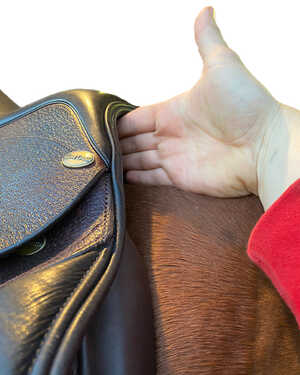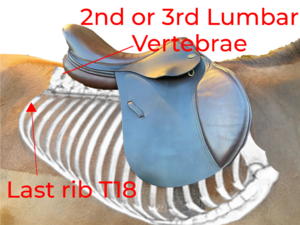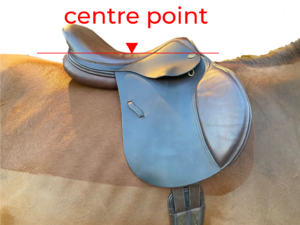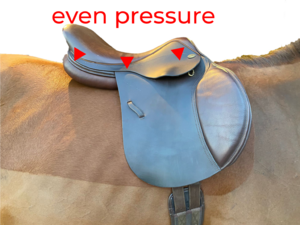A Guide to Saddle Fitting
Any saddle purchased through this website comes with the Sheepham Saddles 5 Day UK Trial. This is your opportunity to make arrangements to have a professional of your choice assess the saddle and its suitability for both the horse and the rider and the purpose it is intended for.

How much wither clearance should a saddle have?
As a rule, you should allow 3-2 fingers clearance between the underside of the pommel and the horse's wither, as well as clearance either side of the wither. The saddle should not touch the wither or spine…a horse is very sensitive around the spine! There should be spine clearance all the way along the gullet channel ensuring the saddle does not contact the spine. You should also check the wither clearance with and without a mounted rider. The weight of the rider can make a huge difference. If the saddle is too narrow the saddle will sit high over the withers and will give you a perched feeling. If a saddle is too wide, it will be too low over the withers, will lift at the back becoming unbalanced and not have sufficient contact. The correct width will mean that there is an even contact between the panels and the horse.
Saddles come in the following widths:
Adjustable - when buying an adjustable saddle you can buy the next width up or down should your horse change shape as it gets older or fitter.
Narrow / Narrow Medium / M or Medium / M/W or Medium Wide / Wide / XW / XXW / XXXW / XXXXW
What are the tree points on a saddle and where should they sit?
Ensure the tree points sit behind the scapula to allow freedom of movement and to not interfere with or damage the shoulder. They should run parallel to the horse’s body shape. This gives an even contact at the front underneath the tree points. If the saddle is the wrong width this will affect the contact that the tree points have.

What is the correct length for a saddle?
The length of the saddle is one of the most important points. The saddle should not extend past the horse’s last rib (T18) onto the lumbar region.
If the saddle sits beyond this point it could cause pain and discomfort, that could have long lasting effects. If you have a horse that has a short back, there are several different saddles that are designed with this in mind. Resulting in shorter panels or panels that curve upward relieving the pressure. You should also make sure the gullet gives sufficient spine clearance. Different breeds of horses will require a different size gullet. This is crucial to avoid making any contact with the spine.
View saddles by length:
Under 15 inches / 15.5 inches / 16 inches / 16.5 inches / 17 inches / 17.5 inches / 18 inches / Over 18 inches

How do I know if the saddle is balanced?
A good fitting saddle will have good balance, being level. Making sure the saddle isn’t tipping at the front or the back. The cantle and pommel should create a flat ‘line’.
Be aware that dressage saddles tend to have higher cantles, this will mean that there won’t be a ‘flat’ line from cantle to pommel, but there still will be balance. A balanced saddle will create a balanced seat for the rider, helping to keep the rider in the correct alignment and balanced. If the saddle is not balanced this will create the rider to become unstable and cause a lot of problems for the comfort of the horse.
Saddles that are too wide will ‘drop’ in front, becoming low on the wither and lifting at the back, creating a lot of movement. this will make the rider tip forward. It is vice versa for a saddle that is too narrow. It will sit too high at the front and will make the rider tilt backwards.

How to check for even contact?
The panels need to create an even contact along the horses back. You should check this when the saddle is ungirthed and girthed. You can check this by running your hand underneath the panels. There should be no pressure points, lumps, or bumps. There should be an even contact all the way along. Bridging is known as the point where the panels loose contact with the horses back, this can create several pressure points and is a sign of a bad fit.
A saddle that loses contact towards the back and lifts will create pressure at the front and become tight on the shoulders. You can get saddles that are built with shorter or curved panels for the purpose of avoiding pressure towards, these are practically good for horses that are short in the back. backwards.
Saddle Fitters Trade Account
-
Help your customers sell unwanted saddles
-
FREE listing on Sheepham saddles website
-
Enquiries emailed direct from “Saddle Fitter Booking form”
-
Sell your old stock using packaging order line/form
-
Extend your own stock range by taking our saddles on trial

